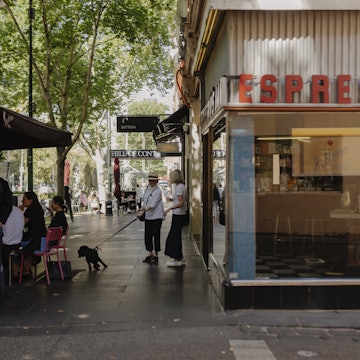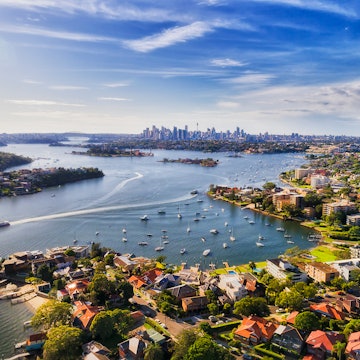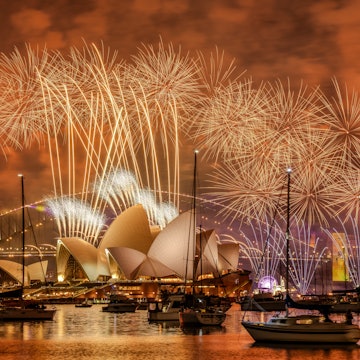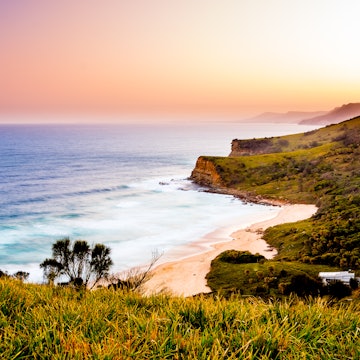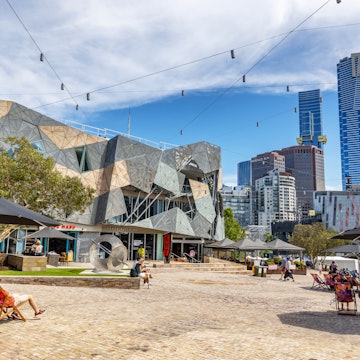

Plan your motor home travels around Australia with this guide to routes, seasons and vehicles. Benjamin Probert/Getty Images
There’s no better way to experience the best of Australia than on a road trip in a camper through its stunning and wild natural landscapes.
Australia’s National Highway 1 may not be as storied as America’s Route 66, but a “lap of the map” – via endless surf beaches, koala-dotted forests, flaming red deserts and awe-inspiring starry skies – will be life-defining. If you haven’t got time for the whole shebang, you’ll have just as much fun exploring one coast (the east coast or west?) or even a smaller region.
While there’s buckets of information out there from travelers who’ve gone before, here are the key things to consider before you hit the road for your motor home adventure in Australia.
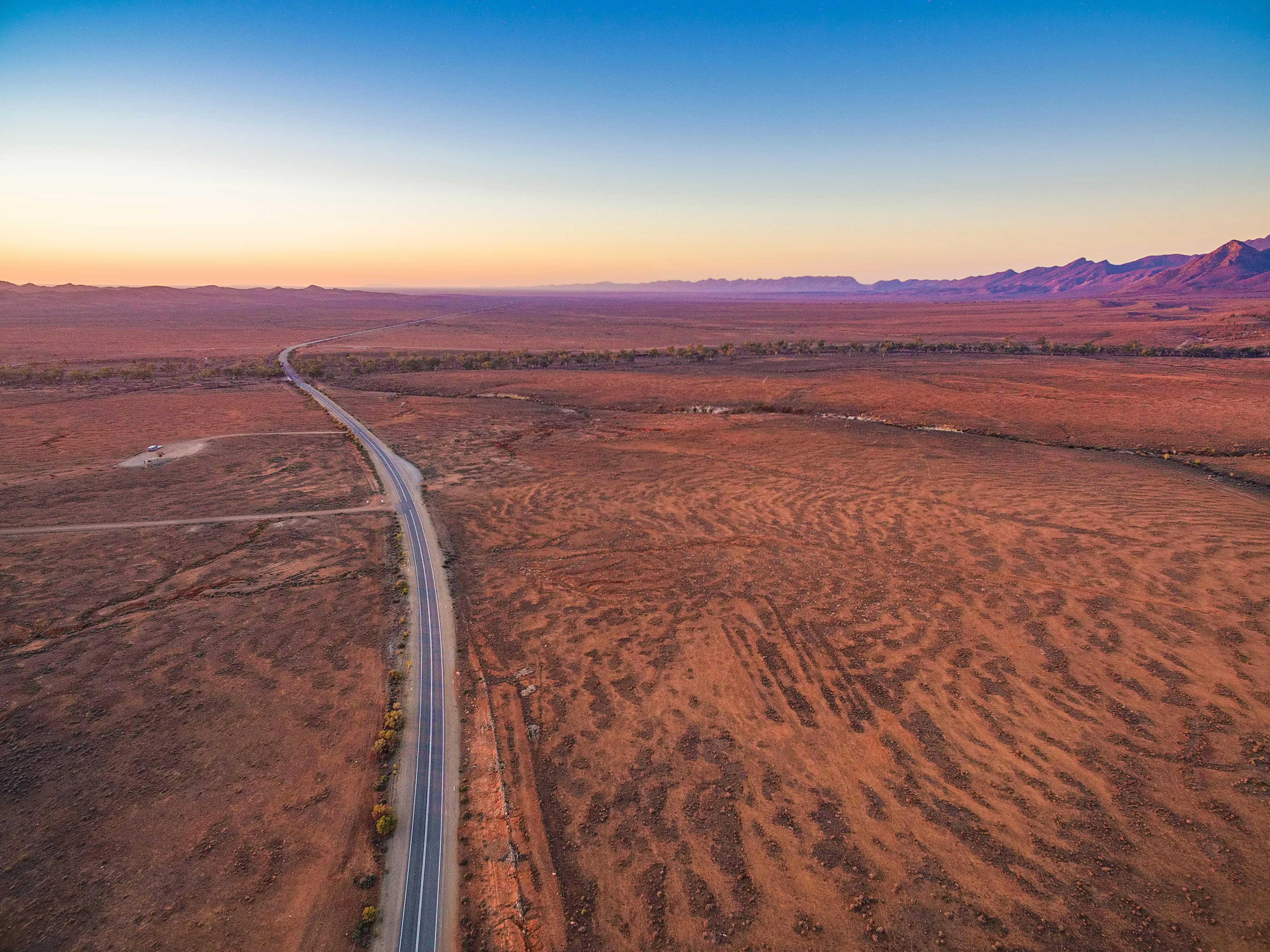
On a short break, focus on one region
If you have only a few weeks then you’ll need to stick to one region. If you want to spend more time communing with nature and less time driving then you might want to target a small region.
For a mix of beaches, mountains and waterfalls head to northern NSW (Byron Bay and around) and southern Queensland (with an incredible coast and the lush Scenic Rim region). For something similar but with emptier roads, check out the coast southwest of Perth around Margaret River and inland to the old forests of Pemberton. Tasmania is also very driveable in two weeks with mountains, beaches and delicious produce everywhere.
Flying into Darwin would take you to some of the most incredible scenery in Australia around Litchfield, Kakadu and down to Uluru and back. From Adelaide, there are options to explore the coast, wineries and wetlands south, or head into the ancient interior of Ikara-Flinders Ranges via the wineries of the Clare Valley.
The coastal roads from Melbourne to Sydney through southern NSW are long and windy, and the geography doesn’t vary quite as much, but the weather is temperate and there are many family-friendly hamlets with good camping sites. Picking up a camper in Cairns means exploring the lush Atherton Tablelands, and the UNESCO World Heritage-listed Daintree National Park, managed by its traditional owners the Eastern Kuku Yalanji people (learn more on a Dreamtime Walk at Mossman Gorge) and the Great Barrier Reef.
But this is just a snapshot of options. With more time you can join a couple of these itineraries together and cruise on – say from Adelaide to Darwin, or from Sydney up to Cairns via Byron Bay in one trip.

Allow at least three months for a "lap of the map"
Some travelers make it their mission to circumnavigate the whole of Australia, and you’ll find plenty of blogs online with people sharing their tips for tackling the project over anything from six weeks to a year.
Three months is a good minimum to dedicate to the trip. It gives you enough time for detours and longer stops at places you fall in love with, but you can also manage costs (the longer you’re away the more you spend, and there's greater chance that mechanical wear and tear will blow out your budget).
May to October is the best time for a camper trip in Australia
Assuming you have only 12 weeks, the best time to go will be during Australia’s cooler months (May to October). In the north, you’ll be traveling in the dry season (any other time of year and a lot of the roads are impassable). Down south, it’ll be cool (cold even, with potential for snow on the Great Dividing Range) in southern NSW and Victoria – but this means campsites and caravan parks won’t be as busy.
December and January are best avoided. These months are school holidays, which means contending with domestic travelers on big summer camping trips. It's also a time with sweltering days where your legs stick to the car seat and the steering wheel is too hot to touch (although this could happen anytime from November to March).
If you’re traveling on a working holiday visa you’ll be able to stop and take up job opportunities wherever they find you – or if you’re on a self-funded gap year and can spend even longer traveling around Australia in your campervan – then you will be traveling in all seasons. Just make sure that you're not attempting to visit the north outside the dry season.
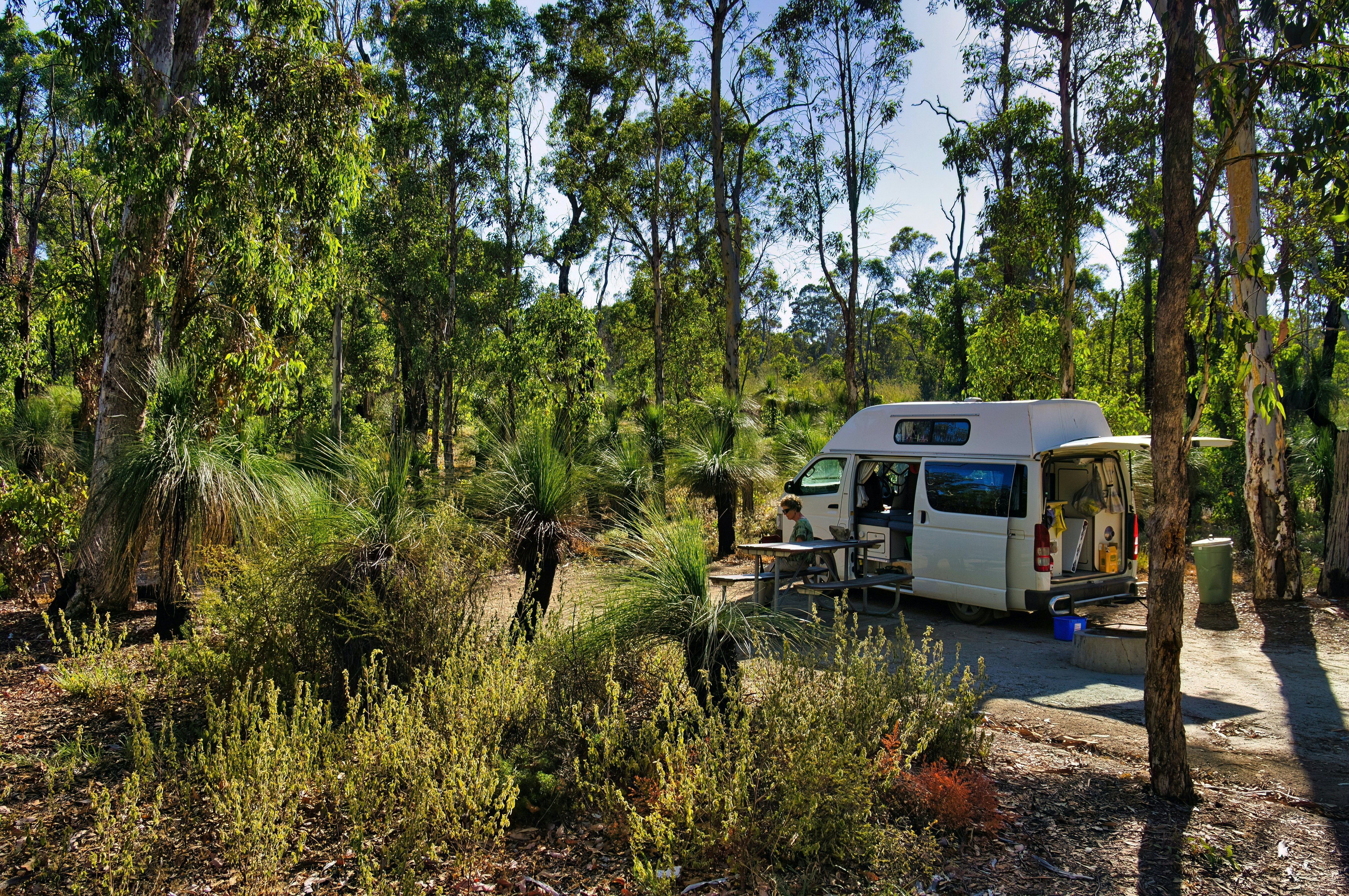
Buying a camper can be cost-effective
Some travelers choose to pull some savings together to buy a vehicle for their once-in-a-lifetime campervan trip in Australia. This can prove cost-effective if you get the right vehicle and look after it, making it possible to sell it at the end of your adventure (with some anticipated depreciation for the extra mileage). As well as the cost of the actual van, you’ll need to factor in other expenses like registration (“rego”); insurance; a roadworthiness certificate (RWC); repairs needed to get one to resell later; and equipping the vehicle with any extras you might want such as a campfire oven, outdoors shower, bikes or canoes.
Rental firms offer a large range of motor homes and vans
Another option is to rent a vehicle from a reputable hire company. In addition to international chains like Avis, there are Australia/NZ-specific ones to check out like Apollo, Maui and Britz.
You’ll have a large range of vehicles to choose from whether you’re looking for a top-of-the-line motor home/RV or very minimal van set-up or roof-top tent. Age and mileage are things to take into account when choosing between companies. The less expensive brands – usually marketed to backpackers – have older vehicles. Vans with Cheapa Campa, for example, are four years on fleet and older.
You’ll need everyone who’s planning to drive to be at the vehicle collection with their driver’s license, plus a credit card (not a debit card) and an upfront security deposit to cover any potential damage. The best advantage of using a rental company is being able to choose a one-way trip: you could drive from Melbourne to Cairns or Perth to Broome (should you decide to tackle one coast or the other) without having to backtrack.
Peer-to-peer campervan rentals are usually well equipped
Just as there is AirBnB for homestays, the Australian company Camplify (now also in the UK and Spain) enables campervan owners to rent to travelers directly. The costs are more affordable, and are usually well set up for an off-grid camping adventure. Some come with solar panels and decent batteries to run devices like fridges and even satellite broadband, so you won’t find yourself without any internet signal in the middle of nowhere.
When booking you get the option of adding extra insurance to reduce the “excess” you pay out of pocket should you have an accident. The only downsides: you have to return the camper from where you borrowed it, and owners can refuse your request based on your age or planned itinerary leaving the door open for discriminatory decisions. Fortunately there are loads of campers available, so you can take your pick.
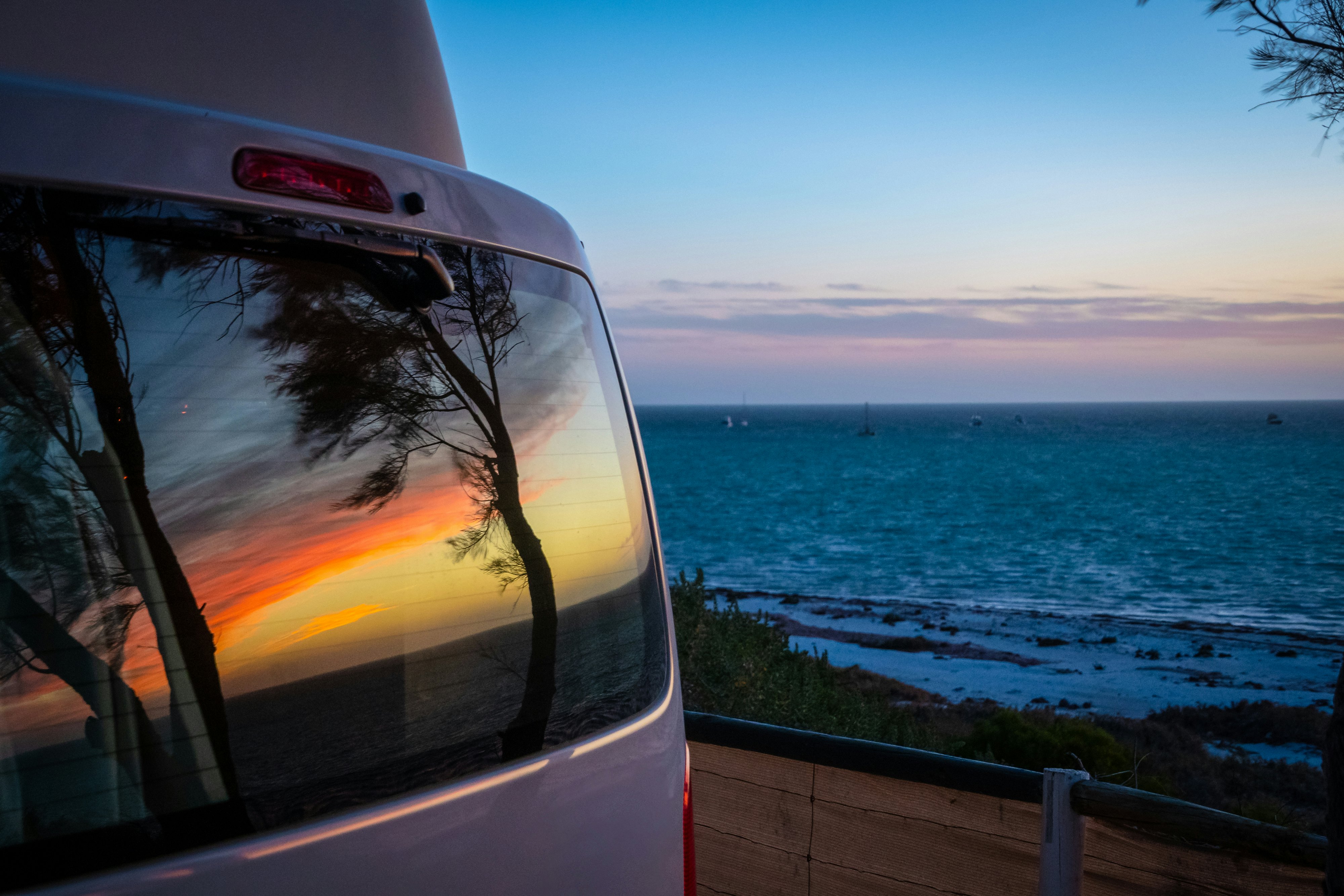
Be realistic about how much space and comfort you need
Discuss what style of camper you want (and can afford) with your travel crew. Don’t forget to consider things like how you’ll manage if you don’t have showers, a camp kitchen, or toilets on board: you’ll need to budget to stay in places with facilities and (if you’re in for the long-haul time) to stop to do laundry occasionally. You also need to plan for disposing of your waste and storing things carefully overnight to ensure your campsite is not raided by local wildlife.
Living in a small space can be challenging, (especially if one of your party is not very good at putting things away), while long drives, heat, and discomfort, can all take their toll. Consider honestly whether an RV vacation is the right trip for you before you invest in buying or hiring a motor home for a long trip. You are not going to be napping with a view of the ocean every day and some days you’ll be on the road for long stretches – Australia is big.
Get breakdown cover and download useful apps before departure
As well as adequate travel insurance to cover your vehicle and any extras, it’s a good idea to join a road users' association like the RACV or NMRA for roadside assistance in case of a breakdown.
There are also some excellent apps to help you on the road. Download them and make the most of them when you’ve got data (there are plenty of places in Australia without mobile signal).
Wikicamps is good for free or low-cost campsites
CamperMate includes free and paid campsites as well as facilities you will need
Hipcamp directs you to secluded spots on private property where you can pay to camp for the night.
Fuel Map Australia directs you to the nearest petrol stop (although current fuel prices are not reliable)
The Bureau of Meteorology (BOM) app is a must-have for local forecasts – and potential weather warnings.
Whether you’re going solo, with friends, or taking your family on a special bucket-list trip, it’s time to get planning.







